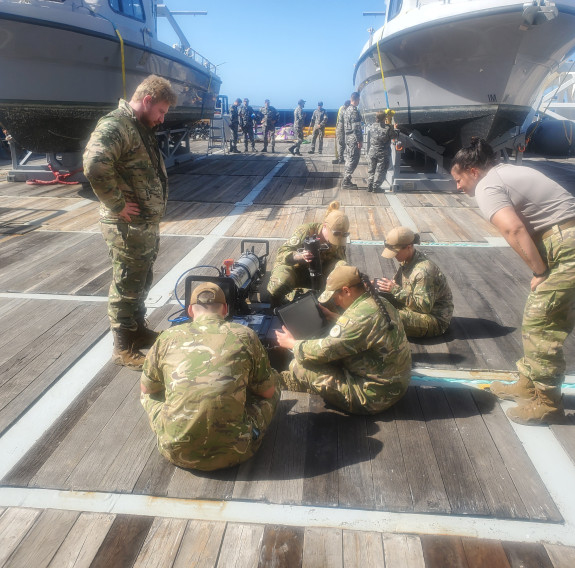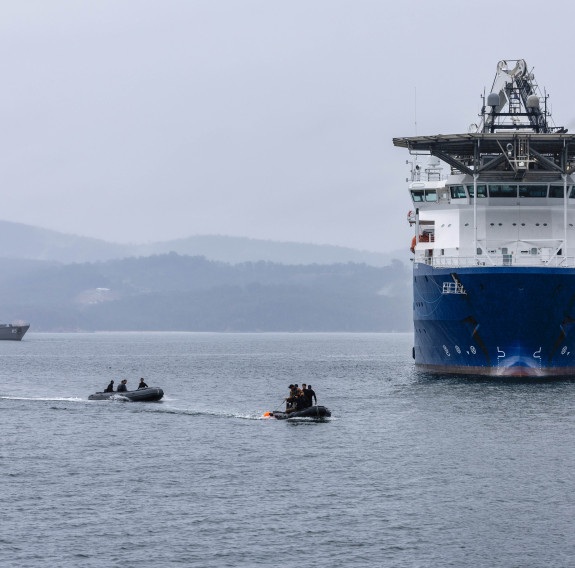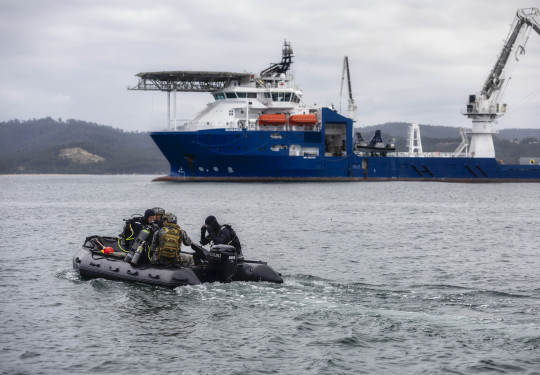Mine blockade no match for littoral warfare teams
Royal New Zealand Navy divers and hydrographers joined forces with Australia and the United States to dismantle a blockade of ‘mines’ outside an Australian port recently.
17 May, 2024
Exercise Dugong, an Australian mine warfare exercise, saw the Royal Australian Navy laying sea mines for the first time in nearly 50 years. The inert mines were laid in the approaches to Eden, one of New South Wales largest fishing ports.
Tackling the mines was a Royal New Zealand Navy Mine Counter Measures (MCM) team from HMNZS Matataua, joining forces with teams from the US Navy and Royal Australian Navy.
It was an opportunity for Matataua’s personnel to explore emerging and in-service mine warfare technologies and practise their skills alongside allies. The theme was demonstrating the ability to keep shipping lanes and a commercial port open.
Matataua’s Autonomous Underwater Vehicle (AUV) team, alongside a RAN Navy Mine Countermeasures Team, worked from Australian undersea support vessel ADV Guidance, launching AUVs to locate and identify mines by sonar and video.
Minehunter coastal HMA Ships Diamantina and Gascoyne worked alongside Guidance to conduct clearance activities with their sonar, mine disposal vehicles and dive teams.
Matataua’s MCM clearance divers and partner forces conducted mine clearance and improvised explosive device operations staged from shore.
To add a realistic edge to training, live sensor readings from the mines were fed to operators ashore, who could tell if divers had successfully neutralised them or not.
Able Diver Tom Karaitiana-Hay says as well as worthwhile training, it was an excellent way of learning how other nations work and benchmarking Matataua’s way of doing things.

HMNZS Matataua’s Autonomous Underwater Vehicle (AUV) team on the deck of ADV Guidance, preparing their underwater REMUS 300 device for mine-hunting.

ADV Guidance holds station as teams in zodiacs look for mines near Eden, New South Wales.
“We were diving on mines on the seabed, identifying them, getting as much information as we could and relaying them to supervisors.” Divers used a hand-held Diver Underwater Search System (DUSS) to pick up mine-like objects.
“We came over thinking it would be warm and crystal clear. But it was murky, cold water and a lot more sharks than in New Zealand,” he says.
ADR Karaitiana-Hay, from Hastings, joined in 2017 as an Electronic Technician and switched trades. “It was the intensity of the diver training that appealed.”
Able Hydrographic Systems Operator Gene Mace, working from Guidance, says it was a very smooth, flowing operation.
“We had this big route lane to clear,” he says. “We’d go out in zodiacs, using the REMUS 300 autonomous underwater vehicle to find mines. There were heaps we had to locate. We’d work deliberately, expanding our lane out to the sea, and passing on the information to the divers. The two minehunters would work on the deeper ones.
“It was very much our usual business, but working with a larger space and with other countries. And ADV Guidance is pretty flash.”
He says they had trained closely with the US and Australian divers during Exercise Talisman Sabre last year and it was great to catch up with familiar faces again. “I’m sure it won’t be the last time we work together.”
AHSO Mace, from Queenstown, joined in 2022. “The Navy has always sparked my interest. It sounded very exciting, and it is. The operation tempo at Matataua is very high but you get to do a lot of cool stuff.”
